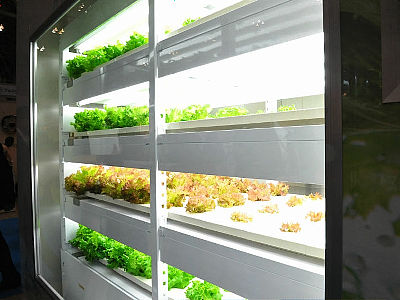A tomato consisting of a large amount of fruits like a grape is developed by gene editing technology

In view of future food shortages and space development, research is underway on crops that can be harvested in places that are not suitable for agricultural work. Meanwhile, a tomato that looks like a grape with a large amount of fruit grown on one stem was born using gene editing technology that applied the
Rapid customization of Solanaceae fruit crops for urban agriculture | Nature Biotechnology
https://www.nature.com/articles/s41587-019-0361-2/metrics
A new tomato ideal for urban gardens and even outer space-Cold Spring Harbor Laboratory
https://www.cshl.edu/a-new-tomato-ideal-for-urban-gardens-and-even-outer-space/
Genetic editing of the new tomatoes was led by a research team led by Professor Zach Lippman of the Cold Spring Harbor Laboratory . `` Soon storage units, high-rise building roofs, and even outer space, may be where gene-edited crops will be grown, '' said Lippman, a place that is not suitable for urban environments and plant growth. But the goal of the study is to develop a wide variety of crops that can be grown.
The research team has been developing new varieties of tomatoes by editing two genes, the SELF-PRUNING (SP) gene , which is involved in the core settling of tomatoes, and the SP5G gene, which is involved in flower formation. Was. However, the results were not as high as expected, and as a result of further research, they discovered the ' SIER gene ' that controls the length of tomato stems.
Therefore, the research team edited the three types of SP gene, SP5G gene, and SIER gene using CRISPR, and seems to have succeeded in developing 'tomatoes with short stems, compact and high yield'.
On the left of the image below is a tomato with two types of SP gene and SP5G gene edited, with thin and short stems. On the other hand, the tomato on the right is a species that has edited three types of genes, including the SIER gene. You. Regarding the essential taste, Professor Lippman commented, 'The size is small, but the taste is good, but of course it depends on personal preference.'

Attempts to grow crops in facilities that can control climatic conditions have been made so far, and although some have been commercialized, most of the cultivation is leafy vegetables like lettuce. That. Cold Spring Harbor Laboratory says, 'Thanks to the application of CRISPR, we were able to create ideal tomatoes even in difficult environments', and releases the state of the experimental agricultural plant in a movie.
These tomatos flourish in a storage unit-YouTube
Agricultural plants in urban areas and space bases require crops with small acreage per plant and high yield. Grape-like tomatoes, developed by a research team led by Professor Lippman, are exactly the crops that meet that requirement. Professor Lippman said he would like to apply the gene editing technology used in this study to other fruit trees like kiwi, saying `` NASA scientists are also interested in the new tomatoes we have developed. '' Was.
The team also argues that the most important thing in this study is that new crops are environmentally friendly. 'Compact plants mean that less forest is cleared as farmland and less fertilizer is needed, and more compact plants and higher yields are due to agricultural carbon dioxide. It will reduce emissions, 'explained Lippman.
Related Posts:







